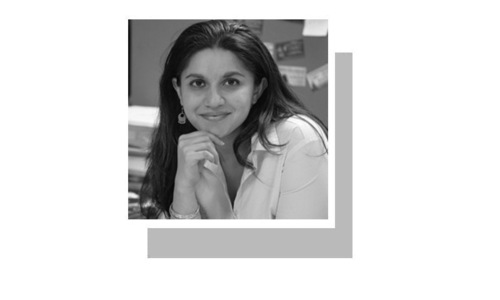WAY before he became the Quaid-i-Azam we know, Mahomedali must have been 16 years old when he briefly attended the Church Mission School. Established in 1845 in the heart of Karachi, CMS must then have been a prime institution of learning, attracting the brightest minds of the subcontinent such as the young Jinnah.
Once nationalised in 1972, similar to the post-colonial decline of several other institutions, the school shrank in character and service. In 2014, it had only 70 students, was hardly functional, and the mafia had their eyes set on its valuable premises. Fast forward another 10 years and the school has made a dramatic comeback with an episode of regrowth and transformation. Today, this school offers learning to 2,700-plus students. How did this come about? And, more importantly, what lessons does it offer to education reformists in Pakistan?
It all began with a random visit by an alumnus. Meraj Nazar, a retired engineer settled in California, was visiting family in Pakistan when he thought of dropping by his childhood school. Shocked at the wretched state it had been reduced to, he reached out to his former schoolmates, calling for a collective effort. As if everyone had just been waiting for this call, a group of influential businessmen, bureaucrats and IT professionals who had exited the public education system decades ago were suddenly back with a commitment to help their alma mater, its teachers, and, most importantly, its students.
This story had another hero, one within the system: a visionary principal, Imtiaz Ali Bughio, who facilitated this school-alumni collaboration. Today, CMS has removed the garbage pile in its backyard and built a butterfly conservatory instead. It provides kits of school supplies to its new students, offers them a computer hall and a science laboratory, establishes free medical camps, and provides free coaching in English language and sports.
CMS provides valuable insights for improving education.
Similar to CMS, there are 174,096 government schools across Pakistan but, barring a few, these are scarcely funded. Despite international commitments to allocate at least four per cent of GDP to education, the federal and provincial governments collectively allocate only 1.7pc, and even this share might be shrinking because of persistent economic challenges.
Despite the gradual decline of the public sector, the majority — 53.5pc — of school-going children in Pakistan attend public schools, and the 29 million children that go to these schools are unlikely to find another source of formal education. The private sector is expanding, mostly in the urban areas, but even the wide variety of elite and low-cost private schools have not been able to cover the 26m children that are out of the education system. Bottom-line: there is no alternative to improving the quality of education delivered in Pakistan’s public schools, which are the only sources of formal education for the majority of school-going children across the country.
Thus far, school management committees are the farthest we have explored in the realm of community engagement. But SMCs have limited scope and capacity, as they only allow parents and teachers to spend highly insufficient funds. With the continuing departure of the influential class, those in the public education system have little agency to undertake reform.
One resource — important and untapped thus far — are school alumni and other community philanthropists, including overseas Pakistanis. This resourceful stakeholder has effectively exited the public education system, but the system badly needs its voice back. With little cost, alumni and volunteers from wider communities can be brought back into the arena of education system stakeholders and contribute significantly to not only equip schools with better teaching aids, but also to deliver soft skills, hold career counselling and motivational sessions, facilitate health awareness, arrange English language and computer courses, and resolve local conflicts between schools and communities.
As in the CMS case study, enthusiastic alumni, philanthropists, and community volunteers can bring about great transformation. However, to scale up such models of public-private partnership, the engagement of alumni needs to be facilitated in the schools. To begin with, this experiment should be piloted in the oldest and most historical 500 schools across the country, whose alumni excel professionally and are in positions of influence inside and outside the country. They want to knock again on their classroom doors, but the education departments need to ensure they are received well. With success demonstrated, this model of collaboration between alumni and school leadership is what the Quaid’s school has to offer to fellow schools in Jinnah’s Pakistan.
The writer is a development professional.
Published in Dawn, August 10th, 2024












































Dear visitor, the comments section is undergoing an overhaul and will return soon.